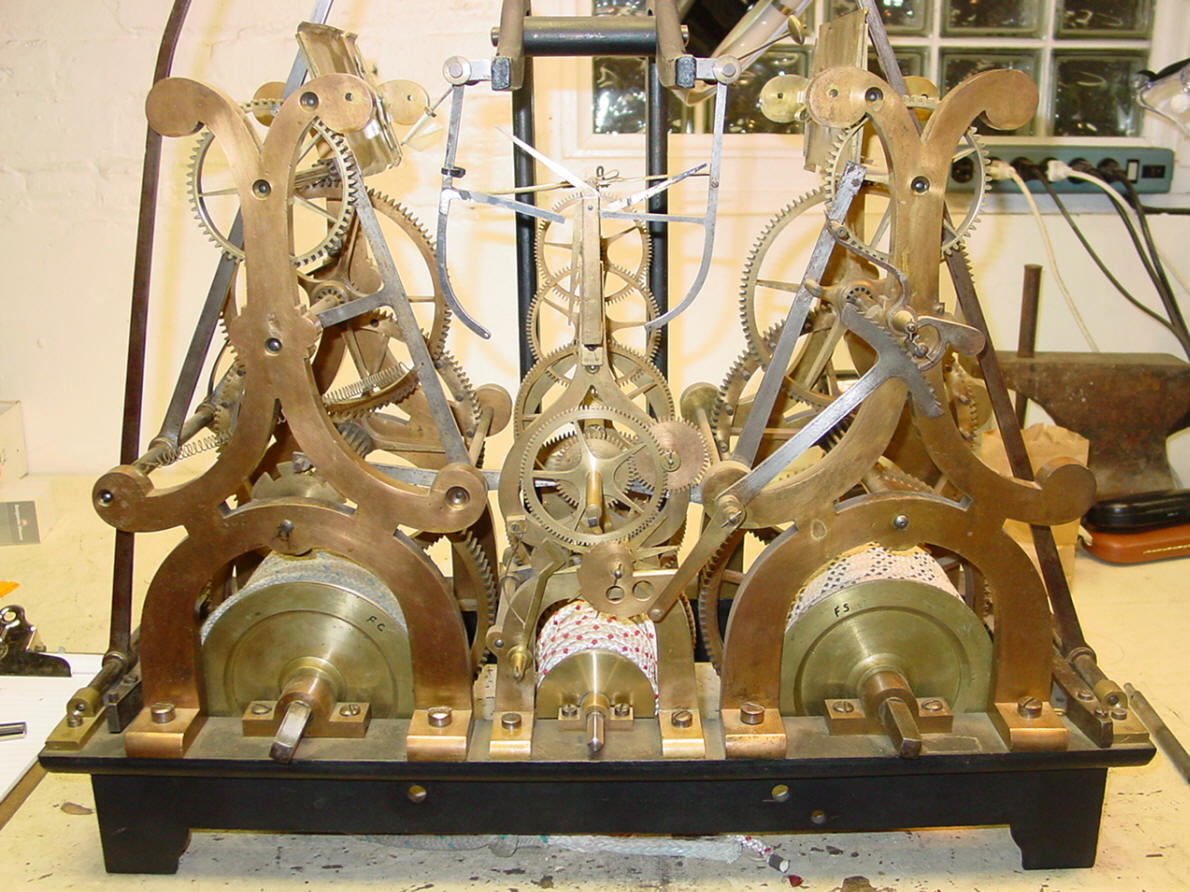|
The photos below show a similar clock that was found a few years after the restoration of the clock described in this segment. However this one had its original case. It was quite a shock to me to discover that instead og the movement being made originally as an exhibition style tower clock, it was really designed as a more conventional tall case clock. Given the large scale and mass of the movement it seems to be unconventional to say the least. This seems especially true as the movement has to be located at over ten feet above the floor, and while still being located behind a glass dial, is still too far above one's line of sight to be properly seen let alone observed in the detail needed to be fully appreciated. It's almost like the maker wanted to make a tower clock, but lacking a tower decided to put it into a domestic style tall case. The height, though, at over ten feet precludes it from being in anything but the most tallest of rooms.
The movement located behind a glass dial.
Rear view of the movement before restoration. Compare it to the last photo below showing the gravity movement before restoration.
The movement after restoration. The escapement here is a Graham style deadbeat while the example in this segment was originally designed as a gravity escapement, (most likely a four-legged type). However, all of the characteristics of this movement from the base to the movement frames and wheel, tooth design, fly governor, rack detents and barrel designs are clearly by the same maker. Here the strike frames are the same one-half inch thick plates with three-eighths for the time train. The time train still contain five wheels as does the gravity design, so this may be a much longer duration per wind given that the four-legged gravity moves one revolution per four ticks of the one and one-quarter second pendulum vs. 32 per evolution in this example an eight fold difference. One difference in design between the two examples is that this movement uses a pair of racks, quarter and hour, arranged in a conventional rack and snail configuration, while the gravity movement uses a rack for the hour, but a count wheel design for the quarters.
An interesting feature here is that the racks are made of brass, where these are normally, as in the gravity example, made of steel. In both examples the strike winding arbor squares are larger than the time train.
The hour snail here is of a more sophisticated design than in the gravity example. We suspect that the original was lost and we replaced it with one that more closely matched this one.
The five wheel time train is of a similar design, but uses smaller wheels than its gravity counterpart. Both have high tooth counts.
This photo shows the gravity escapement movement prior to restoration. |









